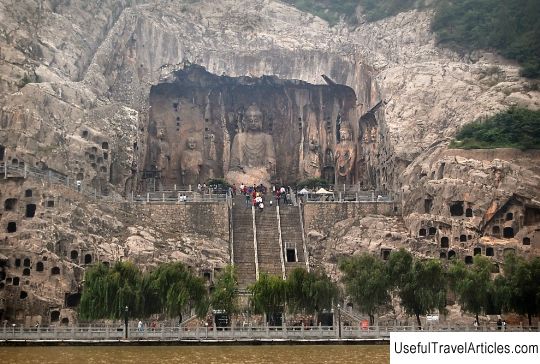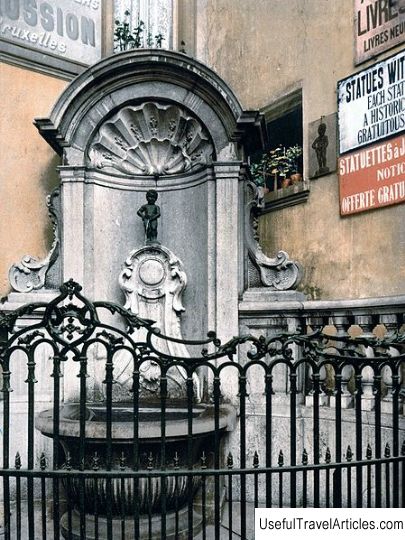Longmen Grottoes (Longmen Grottoes) description and photos - China: Luoyang

Longmen Grottoes (Longmen Grottoes) description and photos - China: Luoyang. Detailed information about the attraction. Description, photographs and a map showing the nearest significant objects. The name in English is Longmen Grottoes. Photo and descriptionLongmen Grottoes are one of the three most outstanding cave structures in China, including Yungang and Mogao caves. The grottoes stretch for 1 km along the Yi River on both sides. On the east bank, there are a large number of small caves that have served as residences for numerous groups of monks. Longmen Grottoes have approximately 1,400 caves, containing 100,000 statues of various sizes, from 25 mm high to the largest Buddha statue. the size of which is 17 meters high. There are also about 2500 steles and 60 pagodas. Fifty large, medium-sized caves are located on the western slopes, which date back to an earlier period than the caves on the eastern slope. An abundance of caves, sculptures on the slopes allows you to catch certain changes in style associated with the time of their creation. On the western slopes, carved figures of statues of Buddha and religious people abound, while on the eastern slopes, figures are already more intricately executed, including images of women, as well as ships. The caves are numbered sequentially from north to south along the western bank of the Yi River. The largest caves with famous sculptures and inscriptions: Guang-dong, which began in 493, Binyang-dong - 505, Lianhu- dong - 520, Shiku-si - 520, Shisku - 520, Yaofang-dong - 570, Zaifu-dong - 636, Fahya-dong - 650, etc. Guang-dong , or Old Sun Cave, is the oldest Lun Cave with carvings in the Northern Wei style. It is also the longest of the caves, located in the central part of the western slope. The cave was hewn out by order of Emperor Xiao Wen. The earliest limestone carvings in this cave now date back to 478, when Emperor Xiao Wei moved his capital from Datong to Luoyang. There are 600 of the finest northern Wei calligraphic inscriptions to be found. There are 3 very large images in the cave. This is the central image of Sakyamuni Buddha with Bodhisattvas on either side. The northern style of Wei is very indicative, in which these images are performed - the thin and emaciated bodies of the saints. Also in the cave, there are approximately 800 graffiti carved into walls and niches, a record number in China. There are two rows of niches along the cave, on the north and south sides, which contain a large number of drawings signed by artists. Over the course of 4 centuries, artisans carved more and more sculptures and reliefs in the Longmen grottoes. Alas, during the years of persecution of Buddhists in the IX century. the history of the destruction of the monastery also began. Then the erosion of soft stone, and the predatory raids of Western collectors, and the vandalism of the hungweipings during the years of the "Cultural Revolution" said their destructive word. Longmen Grottoes are a testament to the creativity of Buddhist art. More than 2100 icon cases, 43 pagodas, more than 100 thousand images of saints, 3600 inscriptions on the stone have survived to this day. and the plundering raids of Western collectors, and the vandalism of the hungweipings during the "Cultural Revolution".Longmen Grottoes are a testament to the creativity of Buddhist art. More than 2100 icon cases, 43 pagodas, more than 100 thousand images of saints, 3600 inscriptions on the stone have survived to this day. and the plundering raids of Western collectors, and the vandalism of the hungweipings during the "Cultural Revolution".Longmen Grottoes are a testament to the creativity of Buddhist art. More than 2100 icon cases, 43 pagodas, more than 100 thousand images of saints, 3600 inscriptions on the stone have survived to this day.      We also recommend reading National Park El Veladero (Parque Nacional El Veladero) description and photos - Mexico: Acapulco Topic: Longmen Grottoes (Longmen Grottoes) description and photos - China: Luoyang. |




